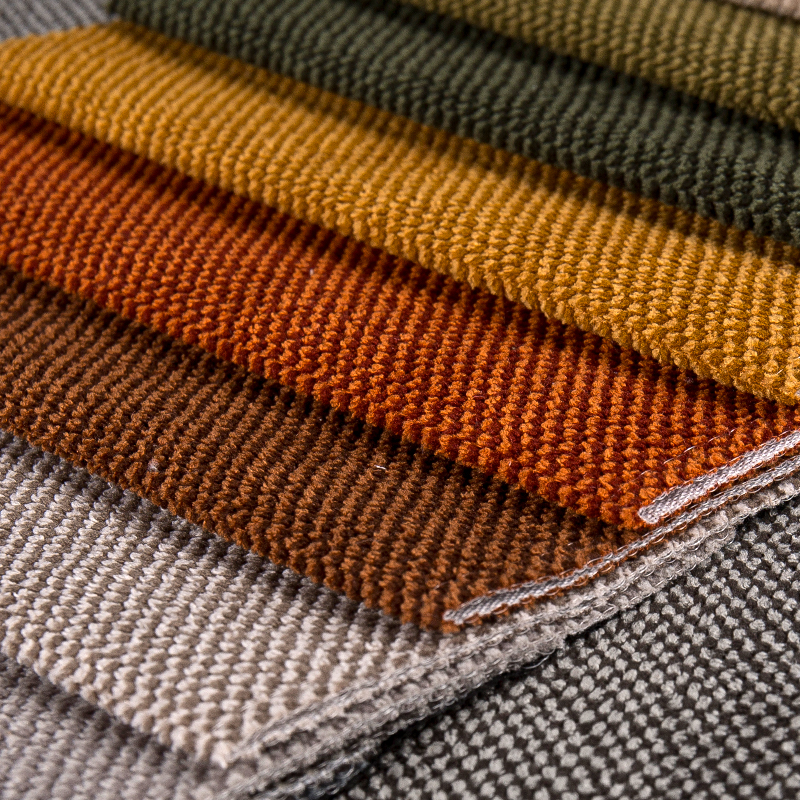Polyester knitted fabrics are widely used in apparel, activewear, and technical textiles due to their durability, stretch, moisture-wicking properties, and ease of maintenance. However, the environmental impact of their production and disposal has become a significant concern in the textile industry. Understanding these considerations is essential for manufacturers, designers, and consumers aiming to make sustainable choices.
Polyester is a synthetic polymer primarily derived from petroleum-based resources, such as ethylene glycol and terephthalic acid. The production process of polyester fibers involves several stages, each with environmental implications:
a. Energy and Resource Consumption
- Polyester production is energy-intensive, requiring high temperatures for polymerization and extrusion.
- Petroleum-derived raw materials are non-renewable, contributing to resource depletion.
b. Greenhouse Gas Emissions
- The chemical synthesis of polyester emits carbon dioxide (CO₂) and other greenhouse gases.
- Energy used in spinning, knitting, and finishing processes further adds to the carbon footprint of polyester knitted fabrics.
c. Chemical Use and Pollution
- Dyeing, printing, and finishing polyester knitted fabrics often involve synthetic dyes, solvents, and finishing agents.
- Improper wastewater treatment can lead to water pollution, affecting aquatic ecosystems.
2. Waste Generation in Polyester Knitting
During the knitting process, leftover fibers, yarn ends, and defective fabric cuts can accumulate as textile waste. Since polyester is non-biodegradable, landfilling or incineration of waste fabrics contributes to long-term environmental challenges:
- Landfill accumulation can persist for hundreds of years.
- Incineration without proper emission control releases toxic gases and particulate matter.
3. Microfiber Pollution
Polyester knitted fabrics, like other synthetic textiles, shed microfibers during washing. These microplastics enter waterways, posing risks to marine life and entering the food chain:
- Regular laundering of polyester garments can release hundreds of thousands of microfibers per wash.
- Microfiber pollution is difficult to filter and can persist in the environment for decades.

4. Recycling and Circular Approaches
To mitigate the environmental impact, recycling polyester knitted fabrics is becoming increasingly important. Key strategies include:
a. Mechanical Recycling
- Involves shredding used fabrics into fibers and re-spinning them into new yarns.
- Mechanical recycling is energy-efficient but may reduce fiber quality, limiting its use in high-performance fabrics.
b. Chemical Recycling
- Breaks down polyester into monomers, which can be re-polymerized into virgin-quality fibers.
- Allows infinite recycling cycles while maintaining fabric performance, but it is currently more expensive and energy-intensive.
c. Blended Fabric Challenges
- Polyester is often blended with natural fibers (e.g., cotton or spandex) to enhance stretch or comfort.
- Recycling blended fabrics is more complex, requiring separation technologies to recover pure polyester fibers effectively.
5. Sustainable Alternatives and Innovations
Several initiatives are being developed to reduce the environmental footprint of polyester knitted fabrics:
- Recycled Polyester (rPET): Made from post-consumer plastic bottles or industrial waste, reducing reliance on petroleum.
- Bio-based Polyester: Derived from renewable plant sources like sugarcane, aiming to lower greenhouse gas emissions.
- Eco-friendly Dyeing and Finishing: Use of low-impact dyes, waterless dyeing technologies, and biodegradable finishing agents.
- Fabric Design for Recycling: Producing mono-material or easily separable blends to improve recyclability.
- Consumer Awareness: Encouraging longer use of garments, proper washing techniques, and responsible disposal to reduce microfiber release.
6. Conclusion
The environmental impact of polyester knitted fabrics spans production, use, and end-of-life disposal. Petroleum-based raw materials, energy-intensive manufacturing, chemical use, and microfiber shedding are major concerns. However, recycling technologies, sustainable polyester alternatives, and improved fabric design offer opportunities to reduce these effects.
By adopting recycled or bio-based polyester, employing eco-friendly dyeing processes, and promoting circular approaches, manufacturers and consumers can help minimize the ecological footprint of polyester knitted fabrics while still benefiting from their durability, versatility, and performance.
